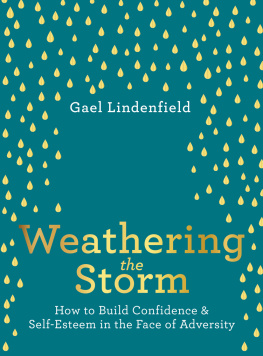THE MOON IN THE
BANYAN TREE
THE MOON IN THE
BANYAN TREE
Gael Harrison

THE MOON IN THE BANYAN TREE
Copyright Gael Harrison 2005
All Rights Reserved
No part of this book may be reproduced in any form
by photocopying or by any electronic or mechanical means,
including information storage or retrieval systems,
without permission in writing from both the copyright
owner and the publisher of this book.
ISBN 1 84401 481 9
First Published 2005 by
ATHENA PRESS
Queens House, 2 Holly Road
Twickenham, TW1 4EG
United Kingdom
Printed for Athena Press
For Gerry, who was my lifeline whilst I was in Tien Yen and John, who made sense of all my scribblings.
Balcony, Hang Gai Street, Hanoi, Vietnam
July 2002
It has only been a week and I am so out of sorts, hot and sticky with swollen fingers and ankles. I wonder if I will ever fit any of my shoes again, and my feet look like a battleground of Elastoplast.
I have just come back from Edinburgh where I have been for six weeks holiday. I said goodbye again to the mountains, the wet pavements and all my loved ones. Apart from pangs of homesickness, I am readjusting to my new Vietnam experiences and am impatient to get my body back to normal. It is difficult racing around buying cutlery, plates and pillows when the heat is suffocating and the sweat runs like rivers, unchecked as arms and hands are laden with parcels. Jungles should evoke this type of imagery, but I am in this concrete world of fumes and pollution, where mosquitoes, rats and cockroaches are still very much in evidence. I am just so hot and the humidity is like an unseen curtain of dampness that will not lift. When will I readjust?
Last night I went out to eat dinner and visited my favourite pavement restaurant near the railway station. There were no tablecloths or candles or little dishes of olives or sophisticated people in fashionable clothes. The menu was a wooden board stuck on a nail on the street wall. It offered two choices: mee soup with pork; or mee soup with fish dumplings. For VND 5,000 (Vietnamese dong) about 25p I was served a giant bowl of noodles, pork, peanuts and half a years supply of greenery floating in a spicy stock. I sat alone, the only foreigner amongst Vietnamese families. The child-size tables were blue and plastic, and the stools were about six inches off the pavement; all around were the remains of the last occupants meal soiled napkins, bits of gristle and discarded tooth picks. Containers of chopsticks, sauces and paper napkins were passed around from table to table. In all there were about five tables, and newcomers were not sent away, but instead another stool was brought and they happily joined an existing group of diners.
As I ate, I watched the female chef sitting about two metres from me, presiding over two charcoal burners. On a table in front of her she had about twenty dishes of ingredients that she casually spooned into bowls ready to be covered with the hot soup. It was all very methodical, and steam billowed up as she slammed lids on and off. Her kitchen was the pavement; the street walls were filthy and the drains were piled with the days rubbish. Masked ladies wearing long gloves would collect it all later and pile it into carts that they pulled around the city, ringing a bell as though they were heralding the old call for leprosy: Unclean, unclean. By ten oclock at night, the streets would be free of trash and the rats would have a hard time finding anything in the gutters.
The sun was a red ball as it sat on top of the blackening rooftops; night was falling and I relished my meal. Two ladies joined me and we smiled. They asked me my name, how old I was, and where I came from standard questions when meeting anyone new in Vietnam. I told them I was a teacher; they told me they were gynaecologists. When we had finished our meal, they paid my bill and offered me a lift home on their motorbike. We all squashed on and, as we weaved through the traffic, I had to reflect that the open generosity shown to me time and time again in Vietnam is more than the wide smile that is so freely given; it is the warmth and care and spontaneous friendship that is offered so abundantly. It is this that makes foreigners feel so welcome. I knew then I was happy to be back.
Vietnam in July
I lean over my balcony in Hang Gai Street and watch the constant flow of mayhem beneath me. Xe oms by the hundred race past. These are the motorbike taxis that are the main form of public transport. In Vietnamese, xe may is motorbike, and om is to cuddle, so it is all very literal and reassuring as you hang on to your driver as he negotiates through the traffic to get you to your destination. The fear factor comes in when he tries to do this much quicker than anyone else.
Along with the xe oms there are bicycles, cyclos and street vendors carrying mobile markets balanced on their shoulder poles. So much noise, colour, variety; and everyone seems to have such purpose. As I watch I wonder where they are all going, and do they ever get there, and dont they ever stop? So many horns, so much impatience.
I am in my new apartment, right in the heart of the old quarter of Hanoi. My landlord is an octogenarian called Mr Phuong, and I share the building and staircase with all his family. I live on the second floor, and it all becomes quite intimate as I pass through their living areas, on rickety stairs that cut through and round another familys home, and see people preparing food or hanging out washing. A faded parade of intimate personal garments hang like worn-out flags along the stairway and on the balconies. New Year decorations of gold and silver tinsel are still draped around the many pot plants on the stairs; they make me smile as I return after my trips to gather things to feather my little nest, which sits up above this warren of humanity.
The whole jumble of apartments reminds me of a private village, with all the generations living side by side. Slowly I am getting to recognise sons and daughters and grandchildren. Being a foreigner I am allowed certain idiosyncrasies; I am also granted some privacy, and on the whole I am left alone, although of course there is the constant curiosity about my daily comings and goings. Like most people I need quiet and peace and a time to shut out the world, and this apartment does give me that, but I miss the freedom to come and go without anyone noticing. Security is tight here, and we have to padlock iron grilles each time we go in or out; one for the street, then one for the stairs and finally the key to our own homes. It does kill the spontaneity of running out to buy bread, knowing that you have to open the great clanking gates of the prison each time.
Yesterday I bought a painting, and as I write the girl in the frame is watching me. She is exquisite. Dressed in a red cheongsam, the traditional Chinese dress, she looks pensive as she prepares for her wedding. She sits against a black background on a red silk patterned bed cover. On the opposite side of the room, my bed is covered by the quilt I made during my first year in Vietnam. It is sewn from three shades of green silk cut into hexagon shapes, and was stitched patiently over six months. It was supposed to symbolise the greens of the rice fields and the peacefulness of the rural scenery. On the wall above is an embroidered picture of a lotus pond. In such a short time I have created a room that I shall want to live in and return to. It will be the first home that I have ever lived in that will be mine and mine alone.
Next page










